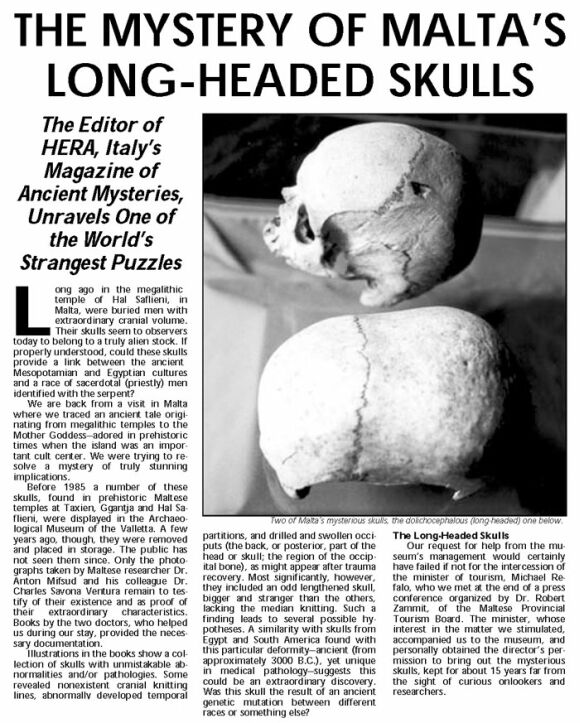It looks like you're using an Ad Blocker.
Please white-list or disable AboveTopSecret.com in your ad-blocking tool.
Thank you.
Some features of ATS will be disabled while you continue to use an ad-blocker.
share:
reply to post by burntheships
I'm sure that it's coincidental, but the drawings in red, on the ceiling, look like alien Gray faces. You know big eyes, and mishaped heads.
Another brilliant thread from Burntheships.
I'm sure that it's coincidental, but the drawings in red, on the ceiling, look like alien Gray faces. You know big eyes, and mishaped heads.
Another brilliant thread from Burntheships.
here is something more in tune with this thread
soundcloud.com...
It was recorded by myself and one other person live
un writen and un rehearsed
I am on guitar, he is on the keys/auto-accompanyment/percussion
this is a sound track to a sumerian goddess ruler who is out for the day surveying her realm...
I had to salvage the mono recording from cassette and stereo=ize it, and mp3 it, so the quality slightly reflects that
but this is what the spirit realm sounds like on a good day
this isn't my beer drinking music...
but you know allmessedupotamia...
beer is bread and wine is fine....and the hookahs are sooo cute
oh yeah, we were underground in a cement basement at the time
soundcloud.com...
It was recorded by myself and one other person live
un writen and un rehearsed
I am on guitar, he is on the keys/auto-accompanyment/percussion
this is a sound track to a sumerian goddess ruler who is out for the day surveying her realm...
I had to salvage the mono recording from cassette and stereo=ize it, and mp3 it, so the quality slightly reflects that
but this is what the spirit realm sounds like on a good day
this isn't my beer drinking music...
but you know allmessedupotamia...
beer is bread and wine is fine....and the hookahs are sooo cute
oh yeah, we were underground in a cement basement at the time
reply to post by Violater1
Many thanks V1,
You know, it may not be a coincidence, have you heard about the
mysterious missing skulls? There were 6 of them ( which was a even
then a reduced number from previous count). They were in a museum,
due to the interesting characteristics.
Then, they went missing. They were originally found buried in the Hal - Saflieni Hypogeum.
I will post some pictures here shortly, It is an interesting part of the whole
mystery surrounding the Hypogeum; as there have been some people that
speculate the skulls were from an unknown race.
Come back and discuss if you have time.
Many thanks V1,
You know, it may not be a coincidence, have you heard about the
mysterious missing skulls? There were 6 of them ( which was a even
then a reduced number from previous count). They were in a museum,
due to the interesting characteristics.
Then, they went missing. They were originally found buried in the Hal - Saflieni Hypogeum.
I will post some pictures here shortly, It is an interesting part of the whole
mystery surrounding the Hypogeum; as there have been some people that
speculate the skulls were from an unknown race.
Come back and discuss if you have time.
edit on 23-2-2014 by burntheships because: (no reason given)
reply to post by Violater1
Ok, here we go...
“Malta, Entrance to the Cavern World” is a recounting of an experience
at Hal Saflieni Hypogeum by C. Lois Jessop, then Secretary of New York
Saucer Information Bureau, with follow-up commentary by Riley Crabb,
originally included in the Journal of Borderland Research
(Vol. 17, No. 2, March 1961)
Note: Left in place the spellings of names as they were originally printed—
Hal Saflieni Hypogeum as Hal Saflini Hypogaeum, Valletta as Valetta, Paola as Paula.
journal.borderlands.com...
One has to read the entire story there, I put up a few snippets.
Now, I will try and get up some pics of the skulls.
Ok, here we go...
“Malta, Entrance to the Cavern World” is a recounting of an experience
at Hal Saflieni Hypogeum by C. Lois Jessop, then Secretary of New York
Saucer Information Bureau, with follow-up commentary by Riley Crabb,
originally included in the Journal of Borderland Research
(Vol. 17, No. 2, March 1961)
Note: Left in place the spellings of names as they were originally printed—
Hal Saflieni Hypogeum as Hal Saflini Hypogaeum, Valletta as Valetta, Paola as Paula.
MALTA, ENTRANCE TO THE CAVERN WORLD
C. Lois Jessop, Secretary, New York Saucer Information Bureau
I visited some friends on the Island of Malta in the Mediterranean in the mid-1930s. One afternoon six of us decided to hire a car and visit some of the many historical tourist attractions on the island. One of our party suggested that, since the weather was very hot, our best bet was to visit some of the caves and underground temples. At least there we could keep cool for a few hours.....
There was a fairly large cave entrance with ancient mural decorations of whirls and wavy lines, diamond patches here and there, also oval patterns seemingly painted with red ochre. ......
One by one we bent down low to walk through a narrow passage which led to a step or two, and again we were able to stand up in a fair sized room which had been built out of the Malta sandstone aeons ago in the Stone-Age.........
I was all for more exploring and talking it over with my friends, three of them decided to go with me and two waited with the guide. I was wearing a long sash around my dress and since I decided to lead the group I asked the next one behind me to hold on to it. Holding our half-burnt candles the four of us ducked into this passage, which was narrower and lower than the others.
Groping and laughing our way along, I came out first, onto a ledge pathway about two feet wide, with a sheer drop about fifty feet or more on my right and a wall on my left. I took a step forward, close to the rock wall side. The person behind me, still holding on to my sash, had not yet emerged from the passage. Thinking it was quite a drop and perhaps I should go no further without the guide I held up my candle.
There across the cave, from an opening deep below me, emerged twenty persons of giant stature. In single file they walked along a narrow ledge. Their height I judged to be about twenty or twenty-five feet, since their heads came about half way up the opposite wall. They walked very slowly, taking long strides. Then they all stopped, turned and raised their heads in my direction. All simultaneously raised their arms and with their hands beckoned me. The movement was something like snatching or feeling for something, as the palms of their hands were face down. Terror rooted me to the spot.
journal.borderlands.com...
One has to read the entire story there, I put up a few snippets.
Now, I will try and get up some pics of the skulls.
edit on 23-2-2014 by burntheships because: (no reason given)
Here are two links to National Geo , referencing the missing children,
the incident occurred after a British Embassy worker, Miss Lois Jessup had
explored the same burial chamber that the children had visited.
www.shadowlark.com...
www.shadowlark.com...
alternativearchaeology.jigsy.com...
Two books that contain references to the unusual skulls.
Google Books
1921 - Anthropology
Google Books Archaeologia, or, Miscellaneous tracts relating to antiquity, Volume 40
By Society of Antiquaries of London
These valid references are not easy to dig up, I would welcome help from anyone
interested in the secrets that have been long hidden, concerning the ancient use
of the Hypogeum, and any correlation to the skeletons, missing skulls and connecting
tunnels.
the incident occurred after a British Embassy worker, Miss Lois Jessup had
explored the same burial chamber that the children had visited.
www.shadowlark.com...
www.shadowlark.com...
She had squeezed past it into the underground city beyond only a
few weeks earlier than the tragic event.Ms Jessup claims of seeing people living
underground.
alternativearchaeology.jigsy.com...
Dr Mifsud said a human skull linking Malta to North Africa was discovered during excavations at Hagar Qim in 1839. It was classified as a skull from North Africa dating to prehistoric times.
This skull was described in several journals and books, such as Charles Pickering's The Races of Man in the mid-19th century.
At the time it was described by Dr Cesare Vassallo as a skull belonging to a male about 30 to 40 years old, and the particularly acute angle of the face characterised it as a Negroid skull.
It was also described and measured by Temi Zammit in 1910, together with the 11 prehistoric skulls initially recovered from the Hal Saflieni Hypogeum. According to Joseph S. Ellul, author of Malta: the pre-diluvian culture, this skull went missing in the mid-20th century.
www.timesofmalta.com...
Two books that contain references to the unusual skulls.
Google Books
1921 - Anthropology
Google Books Archaeologia, or, Miscellaneous tracts relating to antiquity, Volume 40
By Society of Antiquaries of London
These valid references are not easy to dig up, I would welcome help from anyone
interested in the secrets that have been long hidden, concerning the ancient use
of the Hypogeum, and any correlation to the skeletons, missing skulls and connecting
tunnels.
edit on 23-2-2014 by burntheships because: (no reason given)
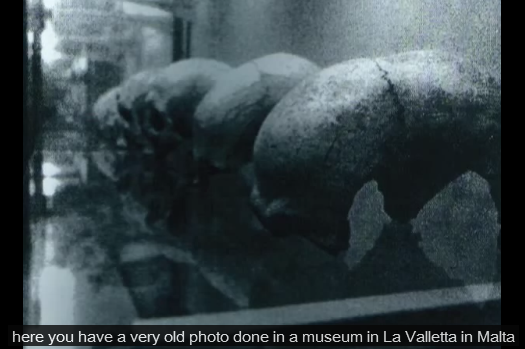
We are back from a visit in Malta among the suite of Maurizia Giusti, alias Syusy Blady and the crew of her Italian national TV show, "Tourists by Chance". Together, we followed the traces of an ancient story that originated from the presence of megalithic temples dedicated to the Mother Goddess on the island, a thaumaturgic figure, adored in pre-historical times of this island that was to become an important cult center. The coverage gave us the possibility to try to resolve a mystery of interesting implications. It was known that until 1985 a number of skulls, found in pre-historic Maltese temples at Taxien, Ggantja and Hal Saflienti, were exposed in the Archeological Museum of the Valletta. But since a few years ago, these were removed and placed in the deposits.
From then, they were not to be seen by the public. Only the photographs taken by the Maltese researcher Dr. Anton Mifsud and his colleague, Dr. Charles Savona Ventura, remained to testify the existence of the skulls and prove…their abnormality. Books written by the two Maltese doctors, who since our first day in Malta helpfully provided us the necessary documentation for our research, illustrate a collection of skulls that show peculiar abnormalities and/or pathologies. Sometimes inexistent cranial knitting lines, abnormally developed temporal partitions, drilled and swollen occiputs as following recovered traumas, but above all, a strange, lengthened skull, bigger and more peculiar than the others, lacking of the median knitting. The presence of this finding leads to a number of possible hypotheses. The similitude with other similar skulls, from Egypt to South America, the particular deformity, unique in the panorama of medical pathology referred to such distant times, (we are talking about approximately 3000 BC) could be an exceptional discovery. Was that skull a result ancient genetic mutation between different races that lived on that island?
forbiddenarchaeology.blogspot.com...#!/2012/12/maltas-large-skulls.html
Spiritual "Vibrations" in the Hypogeum
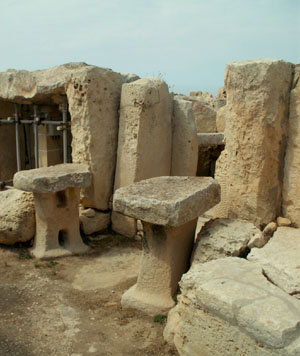
alternativearchaeology.jigsy.com...
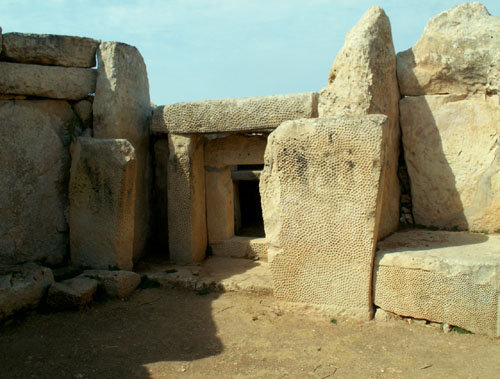
Strange Case of the Hypogeum Skulls

A number of other theories have propped up around the mysterious Hypogeum over the years with the help of such tales, some even believing that the cave realm acts as a special gateway to parallel dimensions.
More serious studies done in recent times are no less intriguing. Several scientists have studied characteristic acoustic resonance patterns that reverberate throughout the underground complex.....
Temple monuments thought contemporaneous to the Hypogeums constructions dot the island landscape on the surface above, all of which are aligned in numerous astronomical sight lines, including summer and winter solstices, perceived through small windows cut into the stone walls.
alternativearchaeology.jigsy.com...

Strange Case of the Hypogeum Skulls
What is so bizarre about the skeletons is that virtually all the remains have somehow mysteriously disappeared over the years, so that by 1971 only 11 skulls were left. And by 2001, only six of the original 7000.
Of the skulls that do remain, the heads contain a unique deformed profile often seen in ancient cultures that prized an elongated skull achieved through binding infants heads with boards and padding. The deformed dolichocephalous skull type, an enlarged cranium, was seen as a sign of greater status in many ancient cultures, not just in Malta, but in South America and Meso America. It appears the ancient Egyptians performed the binding of the skull in its earliest prehistory as well.
Malta and the Mediterranean Race
R . N . BRADLEY
From the discovery of 35 skulls, we now have zero of them available.
Where did they all go?
R . N . BRADLEY
When these were lifted they were found
to have been super-posed upon corpses, no
less than thirty -five skulls being found,
mostly beneath them. The slabs
and pebbles seem to have been used to prop
up and roof over the bodies, but the entrance
of water seems to have caused settlement which
resulted in the sinking of the blocks and the
crushing of the skeletons. The burial arrange-
ment, however, is comparable with the tomb-
tables of the sanctuaries, and is interesting in
connection with the origin of the dolmen. As
I propose to show later, the evolution of the
dolmen could be traced in Malta in all its stages
were it necessary to do so.
The corpses were laid horizontally on the left
side, facing east, and in several cases the position
was crouching. Some of the bodies had in early
times been removed for fresh burials, a circum-
stance for which a parallel will be found in
the scattered human bones of Santa Verna in
the proximity of the complete skeletons.
archive.org...
From the discovery of 35 skulls, we now have zero of them available.
Where did they all go?
edit on 23-2-2014 by burntheships because: (no reason given)
hmmm
Biggesh Skulls....
its looking like the Aryan goth line of the Sumerian ruling Menes the first pharaoh of Egypt
( also known as Minos of Crete and Phoenicians )was all through that area there
Now it looks like Troy was actually in Britain...
Tin mines run by the Aryans and mined by the smaller Picts
There you have Paris, Achilles, and other half men half gods...
but the gods were the goth Aryans tall blond / red haired and Nordic
The master race that later the occult Aryan goth Nazis were trying to resurrect
just back Sitchin down one notch from aliens to goth Aryans...tin was the gold
all around 3500 BC to 1000 AD roughly
i can back this stuff up pretty well
the Celtic cross as measuring tool for navigation and building and surveying is pretty darn convincing
as are the matching names from various king lists of the day
ancienthistory.about.com...
Biggesh Skulls....
its looking like the Aryan goth line of the Sumerian ruling Menes the first pharaoh of Egypt
( also known as Minos of Crete and Phoenicians )was all through that area there
Now it looks like Troy was actually in Britain...
Tin mines run by the Aryans and mined by the smaller Picts
There you have Paris, Achilles, and other half men half gods...
but the gods were the goth Aryans tall blond / red haired and Nordic
The master race that later the occult Aryan goth Nazis were trying to resurrect
just back Sitchin down one notch from aliens to goth Aryans...tin was the gold
all around 3500 BC to 1000 AD roughly
i can back this stuff up pretty well
the Celtic cross as measuring tool for navigation and building and surveying is pretty darn convincing
as are the matching names from various king lists of the day
Thera, Tin, and the Aryan Invasion
Tin ore, however, was extremely rare. And as a result, tin would have become the strategic mineral of the Bronze Age, much like petroleum is the strategic mineral of our time. Those who controlled tin ore had the strong bronze military implements and bronze-related economies needed to keep control and maintain national integrity. Those who did not, fell behind.
And the Aryan Invasion appears to have swept south from this area. There is something quite telling about the Aryan Invasion in this regard. The "ar" sound in Aryan appears to have the same Indo-European root as words for "ore" in various Indo-European-derived languages, "ore" in English, "erz" in German, for instance.
They were thus the "Ore People." Apparently they did not differentiate between "ore" and its product, "metal." So they may have called themselves the "Metal People." This comes in contention with the commonly held opinion that the "Aryan" name meant "noble," or "superior." I would guess that this nomenclature came after the fact. The Aryans dominated other peoples and became superior in the social stratigraphy, and they were thus able to be noble. It is hard to dismiss the idea of "Ore People" as perhaps having been their original designation for themselves.
ancienthistory.about.com...
edit on 23-2-2014 by Danbones because: (no reason given)
Here is a thought
Read more: www.nationsencyclopedia.com...
www.nationsencyclopedia.com...
In 2001, Malta produced 30 tons of salt, obtained in the desalination of sea water; 20 hard limestone quarries yielded 2 million tons of crushed aggregates, for use in construction, lime manufacture, and as a concrete additive; 60 soft quarries produced 300,000 tons of building blocks
Read more: www.nationsencyclopedia.com...
It was discovered that limestone, when burnt and combined with water, produced a material that would harden with age. The earliest documented use of lime as a construction material was approximately 4000 B.C. when it was used in Egypt for plastering the pyramids(ref. ii). The beginning of the use of lime in mortars is not clear. It is well documented, however, that the Roman Empire used lime based mortars extensively. Vitruvius, a Roman architect, provided basic guidelines for lime mortar mixes(ref. iii).
"… When it [the lime] is slaked, let it be mingled with the sand in such a way that if it is pit sand three of sand and one of lime is poured in; but if the same is from the river or sea, two of sand and one of lime is thrown together. For in this way there will be the right proportion of the mixture and blending."
Mortars containing only lime and sand required carbon dioxide from the air to convert back to limestone and harden. Lime/sand mortars hardened at a slow rate and would not harden under water. The Romans created hydraulic mortars that contained lime and a pozzolan such as brick dust or volcanic ash. These mortars were intended be used in applications where the presence of water would not allow the mortar to carbonate properly(ref. iv). Examples of these types of applications included cisterns, fish-ponds, and aqueducts.
www.nationsencyclopedia.com...
reply to post by Danbones
Nice tune there, I was listening to that while posting the
photos of the skulls, it did make the "mood" right.
Interesting that this Temple discovery oversight was by
The Society of Jesus....going to try and find out more
about this, also is this has anything to do with other
societies connected to Malta.
There are other Hypogeums, though none that I know of
with they type of a design.
Nice tune there, I was listening to that while posting the
photos of the skulls, it did make the "mood" right.
Interesting that this Temple discovery oversight was by
The Society of Jesus....going to try and find out more
about this, also is this has anything to do with other
societies connected to Malta.
There are other Hypogeums, though none that I know of
with they type of a design.
en.wikipedia.org...
The study of the structure was first entrusted to Father Manuel Magri of the Society of Jesus, who directed the excavations on behalf of the Museums Committee. Magri died in 1907, before the publication of the report. Following Magri's sudden death, excavation resumed under Sir Themistocles Zammit.
edit on 23-2-2014 by burntheships because: (no reason given)
hmmm
and the royalty of Egypt are often depicted wearing those funny elongated hats...
like they had cone heads
the society of jebus or jesuits
en.wikipedia.org...
and their logo is the sun and a cross...symbols along the lines of my AV which belonged to a knights templar
( there is a Malta branch of these christian masons)
and the royalty of Egypt are often depicted wearing those funny elongated hats...
like they had cone heads
the society of jebus or jesuits
"That we may be altogether of the same mind and in conformity ... if [the Church] shall have defined anything to be black which to our eyes appears to be white, we ought in like manner to pronounce it to be black."
en.wikipedia.org...
and their logo is the sun and a cross...symbols along the lines of my AV which belonged to a knights templar
( there is a Malta branch of these christian masons)
edit on 23-2-2014 by Danbones because: (no reason given)
Thank you for a brillaint post S&F!
Well I personally believe that nearly all the sites across the Maltese Islands all were built with the accustics in mind such as what is found at the Hypogeum.
For example Tarxien, Hagar Qim, Mnajdra and even Ggantija in Gozo all have a simalar design and architectural basis.
Given that these complex's where once roofed (So the general idea is) then maybe too they would hold the same frequencies found at the Hypogeum.

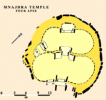

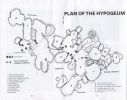
For what or why, Im still mulling over and prob will for the rest of my lifetime.
I have heard many people refer to sound/vibration as a possibility of moving and levitating objects but still doubt that it was possible.
Connecting the idea of sound frequencies with all the sites in Malta and Gozo makes it a reall possibility that it was something every complex needed according to the builders. Such as today we need a cieling at a certain hieght for an obvoius reason for us to stand in. Would it be the same that the ancient people of the Maltese Islands needed each complex to have this sort of complex accoustics?
Also you may help me here, I have wondered before about the 'indents' in most walls of the above ground sites and also found in some chambers of the Hypogeum (the small round fingerprint sized indents)... Would they make an impact to the sound frequencies that bounce of the walls? As they remind me of the triangluar indents you find in modern recording studios.
Well I personally believe that nearly all the sites across the Maltese Islands all were built with the accustics in mind such as what is found at the Hypogeum.
For example Tarxien, Hagar Qim, Mnajdra and even Ggantija in Gozo all have a simalar design and architectural basis.
Given that these complex's where once roofed (So the general idea is) then maybe too they would hold the same frequencies found at the Hypogeum.




For what or why, Im still mulling over and prob will for the rest of my lifetime.
I have heard many people refer to sound/vibration as a possibility of moving and levitating objects but still doubt that it was possible.
Connecting the idea of sound frequencies with all the sites in Malta and Gozo makes it a reall possibility that it was something every complex needed according to the builders. Such as today we need a cieling at a certain hieght for an obvoius reason for us to stand in. Would it be the same that the ancient people of the Maltese Islands needed each complex to have this sort of complex accoustics?
Also you may help me here, I have wondered before about the 'indents' in most walls of the above ground sites and also found in some chambers of the Hypogeum (the small round fingerprint sized indents)... Would they make an impact to the sound frequencies that bounce of the walls? As they remind me of the triangluar indents you find in modern recording studios.
reply to post by Maltese5Rhino
A 1 inch sound wave is about 13500 Hz ( Hertz = cycles per second )
That's pretty close to the high end cut off for a typical stage instrument mike
( shure sm 57 = 40 - 15000 Hz )
www.independentrecording.net...
slightly larger sized holes in egg carton lined walls and ceilings are famous sound absorbers
limestone is somewhat porous - a finer and harder version of egg carton material- more reflective
As You can see on that chart 13500 is described as piercing and is at the vary top of range for male voice HARMONICs
Harmonics are the character of the sound
the Fundamental is the note
Its possible that the holes are a very primitive but effective equalization of the sound - this would, if on a modern sound system, in a stone room, be a move to warm up the sound...I'd be turning the top end (High frequency) down
A 1 inch sound wave is about 13500 Hz ( Hertz = cycles per second )
That's pretty close to the high end cut off for a typical stage instrument mike
( shure sm 57 = 40 - 15000 Hz )
www.independentrecording.net...
slightly larger sized holes in egg carton lined walls and ceilings are famous sound absorbers
limestone is somewhat porous - a finer and harder version of egg carton material- more reflective
As You can see on that chart 13500 is described as piercing and is at the vary top of range for male voice HARMONICs
Harmonics are the character of the sound
the Fundamental is the note
Its possible that the holes are a very primitive but effective equalization of the sound - this would, if on a modern sound system, in a stone room, be a move to warm up the sound...I'd be turning the top end (High frequency) down
reply to post by Danbones
That was very informative thank you!!
To give an idea of the sized holes, they are just like the below.
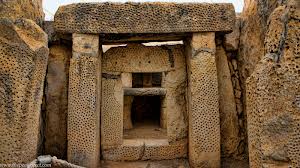
In the Oracle room to my memory there is only one wall with these indents, its south facing so possibly using this combined with your information on the sound process can actually dipict where someone would stand and even possibly the hieght and size of the speaker. As you already found that the most likely case that a speaker would be male.
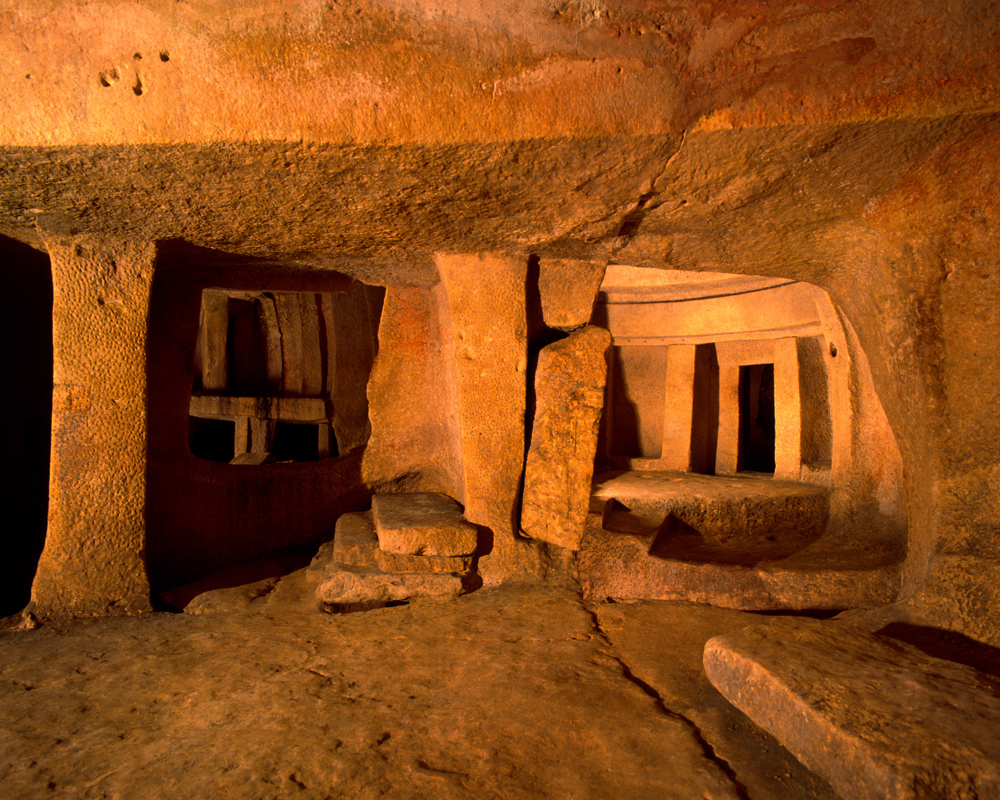
Sorry edited as the wall I remembered is actually a pillar and outside the Oracle room.
That was very informative thank you!!
To give an idea of the sized holes, they are just like the below.

In the Oracle room to my memory there is only one wall with these indents, its south facing so possibly using this combined with your information on the sound process can actually dipict where someone would stand and even possibly the hieght and size of the speaker. As you already found that the most likely case that a speaker would be male.

Sorry edited as the wall I remembered is actually a pillar and outside the Oracle room.
edit on 24-2-2014 by Maltese5Rhino because: Added
Picture
reply to post by burntheships
Since I began looking into this (30 + years), I've had the opportunity to go first hand, on site if you will, to many of the root UFO incidences. From my OP on Dulce, to the lights in Flagstaff. My face to face interviews with Lt Martinez (Ret.) of the Taos County sheriff Dept, his son a detective (Taos Police Dept), Frank Gallegos, who is chief of Police in Questa NM, as well as Trooper Cordova of the New Mexico State Police. The entities, crafts and mutilations, that they have told me about, reinforce my belief that these are demons.
Those who are anti Christian can stop reading here.
In a nut shell, here is what I think (for now) is going on.
From The Book of Enoch, and the Bible, we are told that in Genesis 1:2. “And the earth was without form and void and darkness was upon the face of the deep”. The actual Jewish text states that "the Earth WAS made without form (destroyed by G_D).
Jeremiah 4:23-27 “I looked on the earth, and beheld it formless (laid waste) and void; and to the heavens, and they had no light. I looked on the mountains, and, behold, they quaked. And all the hills were shaken”.
I beheld and lo, there was no man (no Adams or those made in G_D's likeness); and all the cover of the skies had fled. I looked, and, behold, the fruitful place was a wilderness; and all its cities were broken down before the face of Jehovah, before his glowing anger. For so Jehovah has said. The whole land shall be a desolation; yet I will not make a full end."
There was no man, (descendents of Adam), yet there were cities which were destroyed by God’s wrath – who dwelt in these cities?
Isaiah 14:12-17 “How art thou fallen from heaven, O Lucifer, son of the morning! how art thou cut down to the ground, which didst weaken the nations!”
Lucifer was destroyed from the midst of the “stones of fire “( the planets). Arguably we may find evidence of this in such places as the Cydonia section of Mars. The Bible also tells us about the destroyed plant Rahab, which is thought to have been the home of an angelic civilization, perhaps Satan’s home world. It is thought to have been the fifth planet out, where the asteroid belt is now located.
Job 26:11-13:
“The pillars of heaven are stunned at His rebuke. He quiets The sea with his power, and by his understanding He shatters (maw-khats, dashes asunder), Rahab, by His spirit the heavens were beautiful; His hand forbids the fugitive snake.”
Psalm 89:10
“You have broken Rahab in pieces, as one slain: you have scattered your enemies with your mighty arm”.
What we are being allowed to discover, these remains of a technology and race of Nephilim, are nothing new to G_D, only to us.
They are evil, they are present here in human and other forms, they will tell us a thousand truths, so that we believe one lie, and will tempt us, in order for us to not believe, or loose faith in The Lord Jesus Christ, aka Elohim Messiah Yahushua.
May The Lord Jesus Christ's peace be with you.
Since I began looking into this (30 + years), I've had the opportunity to go first hand, on site if you will, to many of the root UFO incidences. From my OP on Dulce, to the lights in Flagstaff. My face to face interviews with Lt Martinez (Ret.) of the Taos County sheriff Dept, his son a detective (Taos Police Dept), Frank Gallegos, who is chief of Police in Questa NM, as well as Trooper Cordova of the New Mexico State Police. The entities, crafts and mutilations, that they have told me about, reinforce my belief that these are demons.
Those who are anti Christian can stop reading here.
In a nut shell, here is what I think (for now) is going on.
From The Book of Enoch, and the Bible, we are told that in Genesis 1:2. “And the earth was without form and void and darkness was upon the face of the deep”. The actual Jewish text states that "the Earth WAS made without form (destroyed by G_D).
Jeremiah 4:23-27 “I looked on the earth, and beheld it formless (laid waste) and void; and to the heavens, and they had no light. I looked on the mountains, and, behold, they quaked. And all the hills were shaken”.
I beheld and lo, there was no man (no Adams or those made in G_D's likeness); and all the cover of the skies had fled. I looked, and, behold, the fruitful place was a wilderness; and all its cities were broken down before the face of Jehovah, before his glowing anger. For so Jehovah has said. The whole land shall be a desolation; yet I will not make a full end."
There was no man, (descendents of Adam), yet there were cities which were destroyed by God’s wrath – who dwelt in these cities?
Isaiah 14:12-17 “How art thou fallen from heaven, O Lucifer, son of the morning! how art thou cut down to the ground, which didst weaken the nations!”
Lucifer was destroyed from the midst of the “stones of fire “( the planets). Arguably we may find evidence of this in such places as the Cydonia section of Mars. The Bible also tells us about the destroyed plant Rahab, which is thought to have been the home of an angelic civilization, perhaps Satan’s home world. It is thought to have been the fifth planet out, where the asteroid belt is now located.
Job 26:11-13:
“The pillars of heaven are stunned at His rebuke. He quiets The sea with his power, and by his understanding He shatters (maw-khats, dashes asunder), Rahab, by His spirit the heavens were beautiful; His hand forbids the fugitive snake.”
Psalm 89:10
“You have broken Rahab in pieces, as one slain: you have scattered your enemies with your mighty arm”.
What we are being allowed to discover, these remains of a technology and race of Nephilim, are nothing new to G_D, only to us.
They are evil, they are present here in human and other forms, they will tell us a thousand truths, so that we believe one lie, and will tempt us, in order for us to not believe, or loose faith in The Lord Jesus Christ, aka Elohim Messiah Yahushua.
May The Lord Jesus Christ's peace be with you.
new topics
-
Biden FINALLY allows Ukraine to use US missiles inside of Russia.
General Conspiracies: 5 hours ago -
The Martian Lafayette Meteorite Interacted with Water Just 742 million years ago
Space Exploration: 10 hours ago -
My Body Of Release…
Philosophy and Metaphysics: 11 hours ago -
Well, here we go red lines crossed Biden gives the go ahead to use long range missiles
World War Three: 11 hours ago
top topics
-
Well, here we go red lines crossed Biden gives the go ahead to use long range missiles
World War Three: 11 hours ago, 27 flags -
The Martian Lafayette Meteorite Interacted with Water Just 742 million years ago
Space Exploration: 10 hours ago, 7 flags -
My Body Of Release…
Philosophy and Metaphysics: 11 hours ago, 4 flags -
Biden FINALLY allows Ukraine to use US missiles inside of Russia.
General Conspiracies: 5 hours ago, 0 flags
active topics
-
Well, here we go red lines crossed Biden gives the go ahead to use long range missiles
World War Three • 85 • : watchitburn -
Tesla cutting 14,000 jobs
Global Meltdown • 54 • : Irishhaf -
President-Elect DONALD TRUMP's 2nd-Term Administration Takes Shape.
Political Ideology • 217 • : WeMustCare -
Encouraging News Media to be MAGA-PAF Should Be a Top Priority for Trump Admin 2025-2029.
Education and Media • 72 • : WeMustCare -
POLLS - Leading Up To The November 2024 USA Elections.
2024 Elections • 322 • : WeMustCare -
it's not a statue or an Alien woman on Mars.
Aliens and UFOs • 21 • : EduardoLopez -
Waterloo in 20mm world's largest diorama (on view at NAM Chelsea Oct 20 & 21) new pics added 10 -16
Member Art • 50 • : Asktheanimals -
RFK is Trumps health pick
2024 Elections • 12 • : WeMustCare -
My Body Of Release…
Philosophy and Metaphysics • 6 • : JJproductions -
The Great Reckoning
Rant • 55 • : VariedcodeSole

